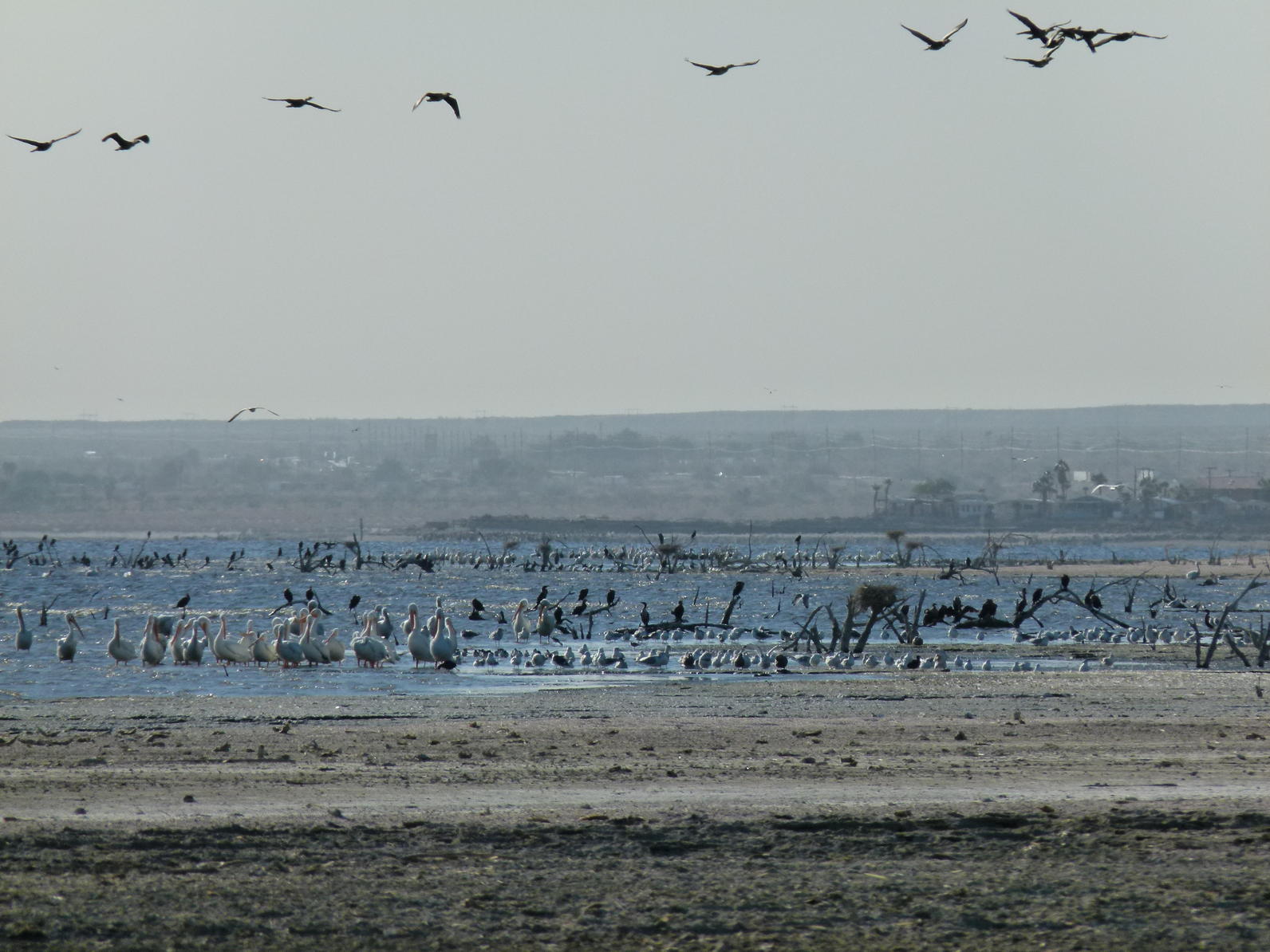Sandhill Crane
Latin: Antigone canadensis
A new model for conservation.
Sandhill Cranes Photo: Choktai Leangsuksun
California’s public lands play a vital role in the success and survival of millions of migratory birds. As birds make their perilous journeys across the Pacific Flyway, they need safe and reliable places to rest and eat. These protected lands provide access to food, water, and nesting habitat needed to sustain them along the way.
There are 34 National Wildlife Refuges in California that play a key role in supporting migratory birds. The Sonny Bono Salton Sea National Wildlife Refuge is one of the most important places for birds in North America, offering a rare spot for shorebirds to stop as they travel over large stretches of dry land.
Mono Lake and its surrounding ecosystem provide a diverse landscape, from marsh and meadow to sagebrush steppe and forest. It is ideal habitat for migrating birds, mule deer, and other big game species. In southern California, the Mojave Trails National Preserve and Joshua Tree National Park provide critical habitat for species such as the Burrowing Owl, Red-tailed Hawk, and Prairie Falcon.
So what do these regions have in common? They are all part of a network of large public lands corridors providing essential habitat along migratory flyways. When public lands are well-managed and kept healthy for migratory birds and other wildlife, they provide many benefits for people, such as clean air and water, economic opportunity, recreation, hunting, mental and physical health benefits. Plus, these intact lands buffer against the effects of climate change.
Right now, California is poised to be a national leader in public lands conservation, working at the intersection of climate change, energy production, land management, and wildlife conservation. Visit the StoryMap to see how.
Black-necked Stilt Photo: Logan Southall
Explore our new StoryMap, which identifies key migratory pathways and highlights the most important public lands in California for birds.
California is first in nation to commit to protecting 30% of our lands and waters by 2030.
By partnering with landowners, we can create lasting protections for birds.
Conservation ranching techniques create habitat and sequester carbon. Under a new bill, the state would pay ranchers to implement them.
Vital protections are needed for wetlands that depend on groundwater under the Sustainable Groundwater Management Act
Coalition of conservation and community groups says groundbreaking is positive step towards ending years of inaction at California’s largest lake.
Audubon science finds that two-thirds of North American birds are at risk of extinction from climate change.
In a statement yesterday, The National Audubon Society praised the commitment to conservation in the 2018 Senate Farm Bill. The bill now moves to conference commitee where it will be reconciled with the House Farm Bill passed last week. Audubon urges robust conservation in the final bill.
“The Senate Farm Bill provides important tools to collaborate with producers on working landscapes to address bird habitat, water, and soil health needs,” said David O’Neill, Chief Conservation Officer for National Audubon Society. The National Audubon Society partners with private land managers on bird-friendly conservation strategies as part of the Working Lands Program.
The bill provides funding for the Regional Conservation Partnership Program (RCPP) to bring together farm and conservation groups for mutually benedical collaborations, such as Audubon California's work to protect the Tricolored Blackbird which is now listed as a Threatened under the California Endangered Species Act.
Read Audubon's full statement here and learn more about why the Senate's 2018 Farm Bill is good for birds.
For more on the RCPP and Tricolored Blackbirds in California check out this story from earlier this year.

Great article from the The Western Hemispher Reserve Shorebird Network about the need for action at the Salton Sea with some input from Audubon California's, Andrea Jones. Check out the story here.
The Los Angeles Times has a strong story out today about how patience is running out for the state to make good on its promises at the Salton Sea:
Assemblyman Eduardo Garcia watched with ill-disguised frustration as a hearing aimed at expediting state projects to restore habitat and control dust storms at the shrinking Salton Sea instead dissolved into discussion of why the efforts were falling further behind schedule.
"We have a plan, we have money, there is additional money lined up, and we have a constituency — myself included — that is running out of patience," Garcia (D-Coachella), chairman of the Assembly Committee on Water, Parks and Wildlife, said.
Our newsletter is fun way to get our latest stories and important conservation updates from across the state.
Help secure the future for birds at risk from climate change, habitat loss and other threats. Your support will power our science, education, advocacy and on-the-ground conservation efforts.
Join the thousands of Californians that support the proposed Chuckwalla National Monument.